I posted earlier about a couple of SAMD21 mini modules that I'm using SAMD21 Mini Modules .
Last month Seeed Studio released an Expansion board for their XIAO module https://www.seeedstudio.com/Seeeduino-XIAO-Expansion-board-p-4746.html .
I've been using their Grove shield for the XIAO and it's handy for prototyping sensor programs and it also has battery management for portability https://www.seeedstudio.com/Grove-Shield-for-Seeeduino-XIAO-p-4621.html .
I was able to get a couple of the Expansion boards at the special introductory price of $9.90. The Expansion boards offer quite a bit of functionality as shown in the spec:
The RTC and microSD card will make it useful for prototype datalogging and it also includes a LiPo battery interface.
One feature that they added are pogo (spring) pins to bring the SWD (software debugger) signals from pads on the bottom of the Xiao board to a header on the Expansion board.
It's a nice feature that I might use but I realized that I won't be able to use this board with the Adafruit QT Py unless I remove those pins because the QT Py has 5V and GND pads there - see below. Since I have two boards I'll probably modify one to use with the QT Py.
The first thing I decided to try was the RTC.
Here is the code: (After setting the time I commented out that part of the code)
Xiao_OLED_RTC.ino
#include <Arduino.h>
#include <U8x8lib.h>
#include <PCF8563.h>
PCF8563 pcf;
#include <Wire.h>
U8X8_SSD1306_128X64_NONAME_HW_I2C u8x8(/* reset=*/ U8X8_PIN_NONE);
//U8X8_SSD1306_128X64_NONAME_SW_I2C u8x8(/* clock=*/ SCL, /* data=*/ SDA, /* reset=*/ U8X8_PIN_NONE); // OLEDs without Reset of the Display
void setup() {
Serial.begin(115200);
u8x8.begin();
u8x8.setFlipMode(0);
Wire.begin();
pcf.init();//initialize the clock
// Comment out after setting the time
// pcf.stopClock();//stop the clock
// pcf.setYear(20);//set year
// pcf.setMonth(12);//set month
// pcf.setDay(19);//set dat
// pcf.setHour(9);//set hour
// pcf.setMinut(41);//set minute
// pcf.setSecond(0);//set second
// pcf.startClock();//start the clock
}
void loop() {
Time nowTime = pcf.getTime();//get current time
u8x8.setFont(u8x8_font_chroma48medium8_r); // choose a suitable font
u8x8.setCursor(0, 0);
// u8x8.print(nowTime.day);
u8x8.print(nowTime.month);
u8x8.print("/");
// u8x8.print(nowTime.month);
u8x8.print(nowTime.day);
u8x8.print("/");
u8x8.print("20");
u8x8.print(nowTime.year);
u8x8.setCursor(0, 1);
u8x8.print(nowTime.hour);
u8x8.print(":");
u8x8.print(nowTime.minute);
u8x8.print(":");
u8x8.println(nowTime.second);
delay(1000);
}
After trying the code out, I powered down the board and to my dismay I discovered that the RTC did not retain the time information. A bit of quick probing with a DMM and I found that the GND pad under the battery holder that is the negative terminal contact was covered with flux. I guess it's hard to clean because I had to use tweezers and tissue soaked with alcohol to get it clean (a Q-Tip or brush won't fit). Now it all works but I had to reprogram the time.
Next I decided to try out plotting a sensor on the OLED. I had used the U8x8 library for the RTC display but need to switch to the AdaFruit SSD1306 and GFX libraries for graphics. I've been using a Grove DHT11 Temperature and Humidity sensor for some other experiments so I decided to try that out.
I found some charting code by Kris Kasprzak - FREE Functions to draw graphs on OLED displays https://www.youtube.com/watch?v=13PFOwcK3-I , so I appropriated the line chart from that. The code does not do continuous plotting, so I'll need to modify that later.
Xiao_Temp_Plot.ino
/*
This program plots DHT11 Temperature Data
using Xiao Expansion Board
*/
#include "DHT.h"
#include <SPI.h>
#include <Wire.h>
#include <Adafruit_GFX.h>
#include <Adafruit_SSD1306.h>
#define DHTPIN 0 // what pin we're connected to
#define DHTTYPE DHT11 // DHT 11
DHT dht(DHTPIN, DHTTYPE);
#define SCREEN_WIDTH 128 // OLED display width, in pixels
#define SCREEN_HEIGHT 64 // OLED display height, in pixels
// Declaration for an SSD1306 display connected to I2C (SDA, SCL pins)
#define OLED_RESET -1 // Reset pin # (or -1 if sharing Arduino reset pin)
Adafruit_SSD1306 display(SCREEN_WIDTH, SCREEN_HEIGHT, &Wire, OLED_RESET);
#define LOGO16_GLCD_HEIGHT 16
#define LOGO16_GLCD_WIDTH 16
// create what ever variables you need
double x, y;
// these are a required variables for the graphing functions
bool Redraw1 = true;
bool Redraw2 = true;
bool Redraw3 = true;
bool Redraw4 = true;
double ox , oy ;
void setup() {
Serial.begin(115200);
dht.begin();
display.begin(SSD1306_SWITCHCAPVCC, 0x3C);
display.clearDisplay();
display.display();
}
unsigned long OldTime;
unsigned long counter;
void loop(void) {
double temp, humid;
temp = dht.readTemperature()*1.8 + 32;
humid = dht.readHumidity();
Serial.print("Temperature: ");
Serial.print(temp);
Serial.println(" *C");
DrawCGraph(display, x++, temp, 30, 50, 80, 40, 0, 100, 25, 60, 80, 10, 0, "Temperature F", Redraw4);
if (x > 100) {
while (1) {}
}
delay(1000);
}
/*
&display to pass the display object, mainly used if multiple displays are connected to the MCU
x = x data point
y = y datapoint
gx = x graph location (lower left)
gy = y graph location (lower left)
w = width of graph
h = height of graph
xlo = lower bound of x axis
xhi = upper bound of x asis
xinc = division of x axis (distance not count)
ylo = lower bound of y axis
yhi = upper bound of y asis
yinc = division of y axis (distance not count)
title = title of graph
&redraw = flag to redraw graph on fist call only
*/
void DrawCGraph(Adafruit_SSD1306 &d, double x, double y, double gx, double gy, double w, double h, double xlo, double xhi, double xinc, double ylo, double yhi, double yinc, double dig, String title, boolean &Redraw) {
double i;
double temp;
int rot, newrot;
if (Redraw == true) {
Redraw = false;
d.setTextSize(1);
d.setTextColor(SSD1306_WHITE, SSD1306_BLACK);
d.setCursor(35, 4);
d.println(title);
// d.fillRect(0, 0, 127 , 16, SSD1306_WHITE);
// d.setTextColor(SSD1306_BLACK, SSD1306_WHITE);
// d.setTextSize(1);
// d.setCursor(2, 4);
// d.println(title);
ox = (x - xlo) * ( w) / (xhi - xlo) + gx;
oy = (y - ylo) * (gy - h - gy) / (yhi - ylo) + gy;
// draw y scale
d.setTextSize(1);
d.setTextColor(SSD1306_WHITE, SSD1306_BLACK);
for ( i = ylo; i <= yhi; i += yinc) {
// compute the transform
// note my transform funcition is the same as the map function, except the map uses long and we need doubles
temp = (i - ylo) * (gy - h - gy) / (yhi - ylo) + gy;
if (i == ylo) {
d.drawFastHLine(gx - 3, temp, w + 3, SSD1306_WHITE);
}
else {
d.drawFastHLine(gx - 3, temp, 3, SSD1306_WHITE);
}
d.setCursor(gx - 27, temp - 3);
d.println(i, dig);
}
// draw x scale
for (i = xlo; i <= xhi; i += xinc) {
// compute the transform
d.setTextSize(1);
d.setTextColor(SSD1306_WHITE, SSD1306_BLACK);
temp = (i - xlo) * ( w) / (xhi - xlo) + gx;
if (i == 0) {
d.drawFastVLine(temp, gy - h, h + 3, SSD1306_WHITE);
}
else {
d.drawFastVLine(temp, gy, 3, SSD1306_WHITE);
}
d.setCursor(temp, gy + 6);
d.println(i, dig);
}
}
// graph drawn now plot the data
// the entire plotting code are these few lines...
x = (x - xlo) * ( w) / (xhi - xlo) + gx;
y = (y - ylo) * (gy - h - gy) / (yhi - ylo) + gy;
d.drawLine(ox, oy, x, y, SSD1306_WHITE);
d.drawLine(ox, oy - 1, x, y - 1, SSD1306_WHITE);
ox = x;
oy = y;
// up until now print sends data to a buffer NOT the screen
// this call sends the data to the screen
d.display();
}
Probably need to do some real work (I hear the wife vacuuming  ). I'll have to try datalogging to the SD card later.
). I'll have to try datalogging to the SD card later.

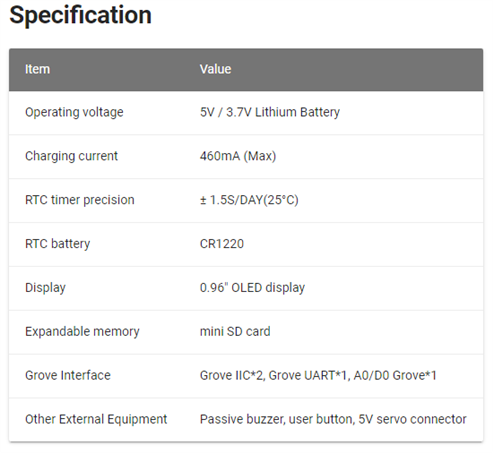
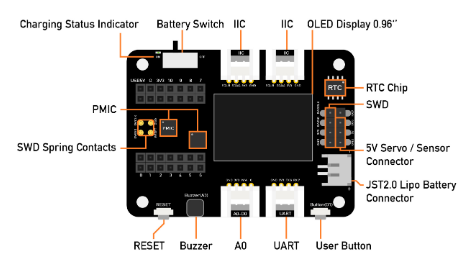
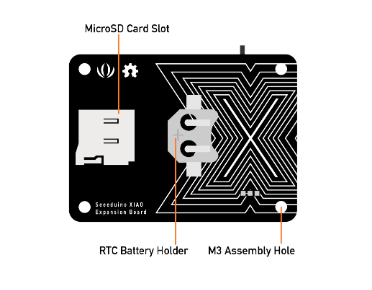

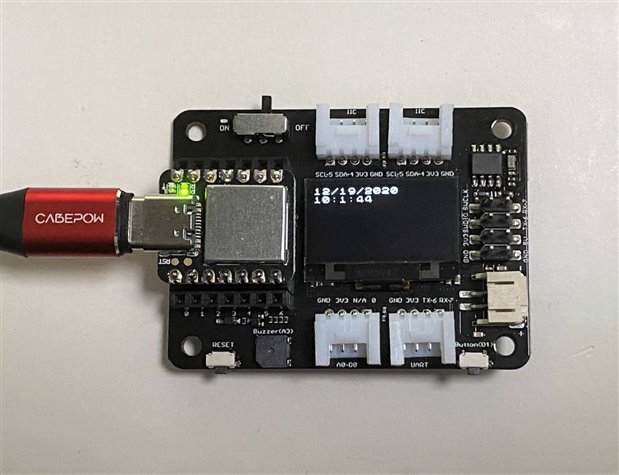
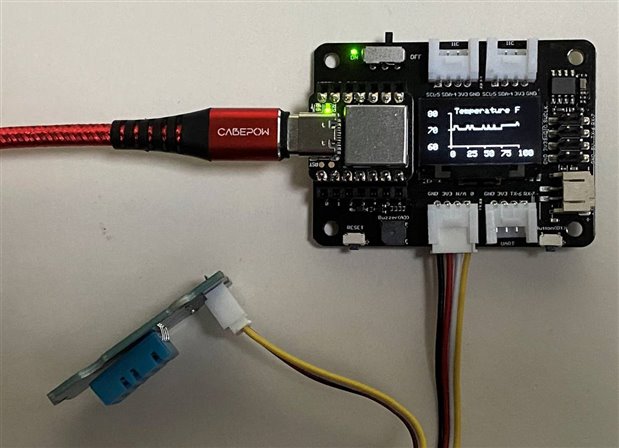
Top Comments
-

gimondan
-
Cancel
-
Vote Up
+2
Vote Down
-
-
Sign in to reply
-
More
-
Cancel
-

ralphjy
in reply to gimondan
-
Cancel
-
Vote Up
+1
Vote Down
-
-
Sign in to reply
-
More
-
Cancel
-

gimondan
in reply to ralphjy
-
Cancel
-
Vote Up
+1
Vote Down
-
-
Sign in to reply
-
More
-
Cancel
Comment-

gimondan
in reply to ralphjy
-
Cancel
-
Vote Up
+1
Vote Down
-
-
Sign in to reply
-
More
-
Cancel
Children